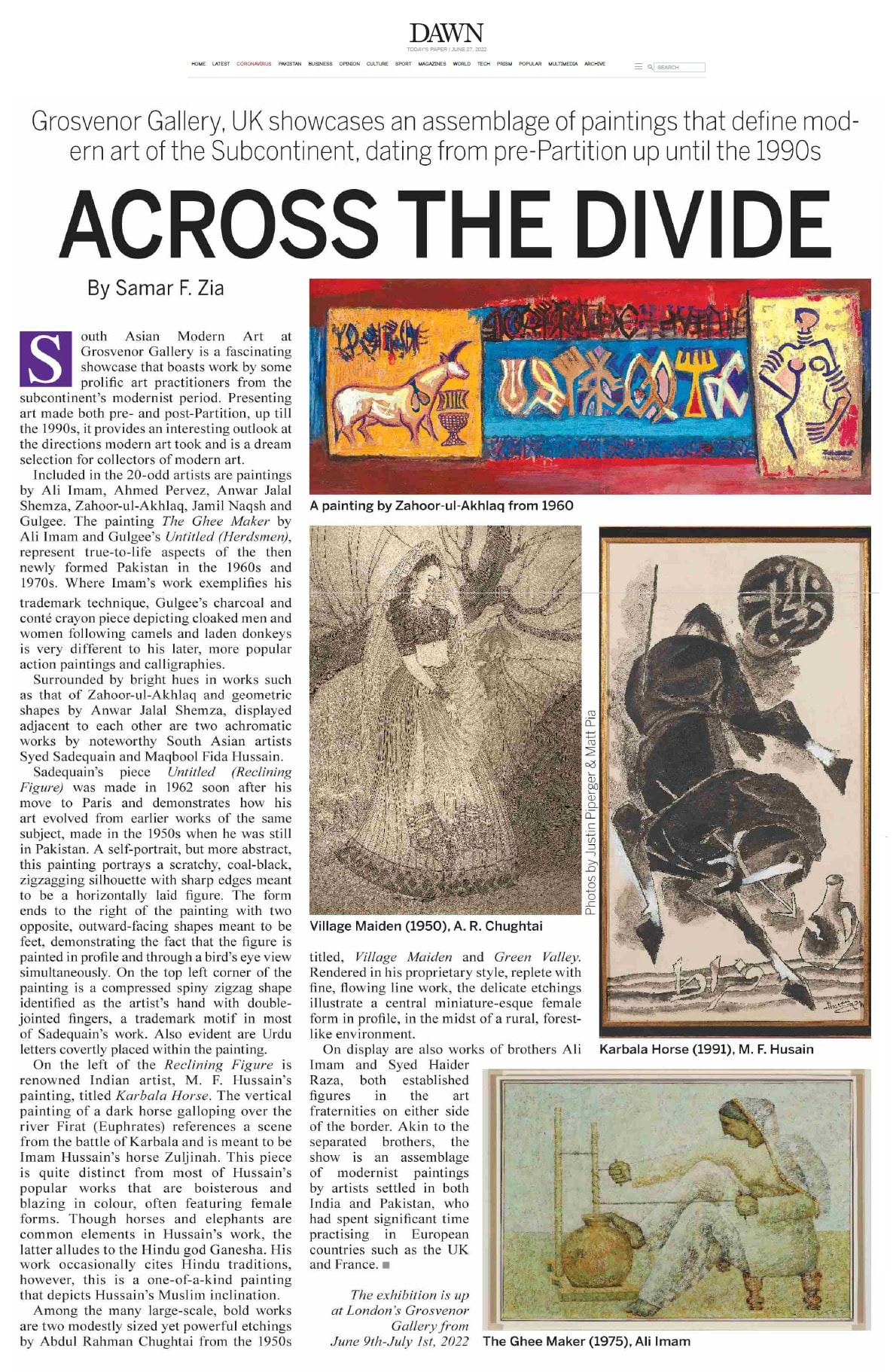South Asian Modern Art at Grosvenor Gallery is a fascinating showcase that boasts work by some prolific art practitioners from the subcontinent's modernist period. Presenting art made both pre- and post-Partition, up till the 1990s, it provides an interesting outlook at the directions modern art took and is a dream selection for collectors of modern art.
Included in the 20-odd artists are paintings by Ali Imam, Ahmed Pervez, Anwar Jalal Shemza, Zahoor-ul-Akhlaq, Jamil Naqsh and Gulgee. The painting The Ghee Maker by Ali Imam and Gulgee's Untitled (Herdsmen), represent true-to-life aspects of the then newly formed Pakistan in the 1960s and 1970s. Where Imam's work exemplifies his trademark technique, Gulgee's charcoal and conté crayon piece depicting cloaked men and women following camels and laden donkeys is very different to his later, more popular action paintings and calligraphies.
Surrounded by bright hues in works such as that of Zahoor-ul-Akhlaq and geometric shapes by Anwar Jalal Shemza, displayed adjacent to each other are two achromatic works by noteworthy South Asian artists Syed Sadequain and Maqbool Fida Hussain.
Grosvenor Gallery, UK showcases an assemblage of paintings that define modern art of the Subcontinent, dating from pre-Partition up until the 1990s
Sadequain's piece Untitled (Reclining Figure) was made in 1962 soon after his move to Paris and demonstrates how his art evolved from earlier works of the same subject, made in the 1950s when he was still in Pakistan. A self-portrait, but more abstract, this painting portrays a scratchy, coal-black, zigzagging silhouette with sharp edges meant to be a horizontally laid figure. The form ends to the right of the painting with two opposite, outward-facing shapes meant to be feet, demonstrating the fact that the figure is painted in profile and through a bird's eye view simultaneously. On the top left corner of the painting is a compressed spiny zigzag shape identified as the artist's hand with double-jointed fingers, a trademark motif in most of Sadequain's work. Also evident are Urdu letters covertly placed within the painting.
On the left of the Reclining Figure is renowned Indian artist, M. F. Hussain's painting, titled Karbala Horse. The vertical painting of a dark horse galloping over the river Firat (Euphrates) references a scene from the battle of Karbala and is meant to be Imam Hussain's horse Zuljinah. This piece is quite distinct from most of Hussain's popular works that are boisterous and blazing in colour, often featuring female forms. Though horses and elephants are common elements in Hussain's work, the latter alludes to the Hindu god Ganesha. His work occasionally cites Hindu traditions, however, this is a one-of-a-kind painting that depicts Hussain's Muslim inclination.
Among the many large-scale, bold works are two modestly sized yet powerful etchings by Abdul Rahman Chughtai from the 1950s titled, Village Maiden and Green Valley. Rendered in his proprietary style, replete with fine, flowing line work, the delicate etchings illustrate a central miniature-esque female form in profile, in the midst of a rural, forest-like environment.
On display are also works of brothers Ali Imam and Syed Haider Raza, both established figures in the art fraternities on either side of the border. Akin to the separated brothers, the show is an assemblage of modernist paintings by artists settled in both India and Pakistan, who had spent significant time practising in European countries such as the UK and France.
The exhibition is up at London's Grosvenor Gallery from June 9th-July 1st, 2022
Published in Dawn, EOS, June 26th, 2022










